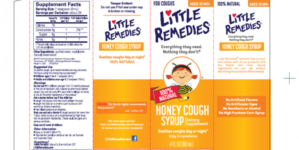-
Social Security Benefits Could Be Cut in 8 Years Unless Congress Acts - 17 mins ago
-
Cough Syrup Recall Sparks Nationwide Warning - 38 mins ago
-
Prankster wins the lottery. Wife tells him to take out the garbage - 41 mins ago
-
U.S. Strike on Iran Would Bring Risks at Every Turn - about 1 hour ago
-
The Vicious Campaign Against Meghan Markle Must End | Opinion - about 1 hour ago
-
L.A. street life ‘paralyzed’ as ICE raids keep shoppers away, close businesses - about 1 hour ago
-
When Humans Learned to Live Everywhere - 2 hours ago
-
Minnesota Could Put Property Tax Rise to Voters - 2 hours ago
-
Pokémon GO’s Future? Night Events and Country Specific Pokémon, Says Dev - 2 hours ago
-
Karen Read Acquitted in Murder Trial Over Boyfriend’s Death Outside Boston - 2 hours ago
Scorpion Venom Could Help Treat Breast Cancer
A venomous creature from the Amazon rainforest may hold the key to fighting one of the deadliest cancers affecting women today.
According to the American Cancer Society, skin cancers aside, breast cancer is the most common cancer among women in the U.S.—accounting for about 30% of all new female cancer cases annually, with an estimated 42,170 women expected to die from it in 2025.
Brazilian scientists have discovered that the venom of the Brotheas amazonicus scorpion contains a molecule that kills breast cancer cells in a way similar to chemotherapy, according to a groundbreaking study by researchers in Brazil.
“Through bioprospecting, we were able to identify a molecule in the species of this Amazonian scorpion that is similar to that found in the venoms of other scorpions and that acts against breast cancer cells,” said Eliane Candiani Arantes, a professor at the University of São Paulo and the project’s coordinator.

Sinhyu/iStock/Getty Images Plus
The molecule in question, called BamazScplp1, is a type of peptide—a short chain of amino acids—that showed cancer-fighting properties when tested in the lab.
It worka similarly to paclitaxel, a standard chemotherapy drug, by inducing necrosis, or uncontrolled cell death, in breast cancer cells.
Unlike some other cell-killing processes that are regulated by the body, necrosis causes the cancer cells to burst and die—a tactic that has also been observed in other venom-based compounds.
What Is Bioprospecting?
Bioprospecting is the process of searching for useful compounds in nature, especially from plants, animals, and microorganisms. In this case, the team explored scorpion venom for potential bioactive molecules—substances that affect living tissues in a beneficial way, such as fighting infections or cancer.
Turning Venom into Medicine—Without the Scorpions
The researchers aren’t milking scorpions for their venom at scale. Instead, they are using a process called heterologous expression, which means inserting the gene that produces a particular protein into another organism—often yeast or bacteria—so it can be produced in large quantities in the lab.
“We also intend to obtain these molecules through heterologous expression,” Arantes said, referring to BamazScplp1 and other promising compounds.
One such host organism is Pichia pastoris, a species of yeast originally isolated in France in 1950. It’s commonly used in biotechnology to manufacture proteins that would otherwise be difficult to source naturally.
“Our idea now is to obtain this serine protease through heterologous expression [in a fragment or complete gene from a host organism that doesn’t have it naturally] in Pichia pastoris,” she added.
The “Super Glue” Made from Snake Venom
This isn’t the first time researchers in Brazil have turned to venom for medical innovation. At the Center for the Study of Venoms and Venomous Animals (CEVAP), scientists developed a patented product called fibrin sealant—a kind of biological glue made by combining serinoproteinase (an enzyme found in snake venom) with cryoprecipitate, a component derived from the blood of buffalo, cattle, or sheep and is rich in fibrinogen, a protein essential for blood clotting.
When mixed, the two form a fibrin network, mimicking the body’s natural healing process. This sealant has been studied for uses like nerve repair, bone injury treatment and even helping restore movement after spinal cord injuries. It is currently in phase three clinical trials, the last stage before a drug can be considered for approval and widespread use.
“This growth factor favors the formation of new vessels. If we combine it with colinein-1, we can create an improved fibrin sealant compared to the one being developed at CEVAP, with the possibility of expanding the industrial scale, since it can be obtained through heterologous expression,” Arantes said.
A Bigger Push Toward Biopharmaceutical Innovation
All of this work is being carried out as part of the Center for Translational Science and Development of Biopharmaceuticals (CTS), a program aimed at turning biological discoveries into practical medical treatments. The CTS is part of a broader push by FAPESP, a public foundation in Brazil that funds scientific research.
Their strategy isn’t limited to scorpion venom. The team has also worked with rattlesnake proteins, including a compound called cholinein-1, and is developing another bioactive substance known as CdtVEGF, which promotes the growth of blood vessels—a potentially valuable tool in tissue regeneration.
What Comes Next?
The discovery of BamazScplp1 is still in the early stages. The results were shared at FAPESP Week France, a scientific conference held from June 10 to 12 in Toulouse, southern France. But the findings highlight the growing interest in nature-based compounds and how they might work alongside or even replace traditional treatments like chemotherapy.
If further tests confirm its effectiveness and safety, the molecule from the scorpion could someday be developed into a new kind of anti-cancer drug, offering patients more options and possibly fewer side effects.
Do you have a tip on a health story that Newsweek should be covering? Do you have a question about breast cancer? Let us know via health@newsweek.com.
Source link




















